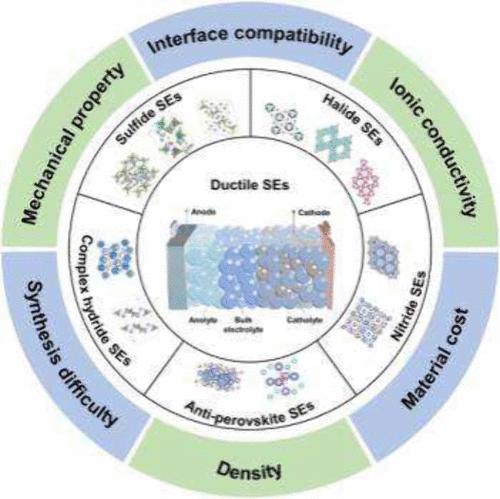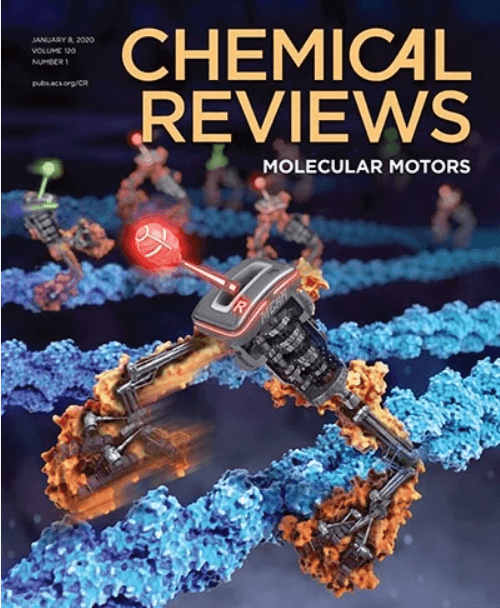Ductile Inorganic Solid Electrolytes for All-Solid-State Lithium Batteries
IF 51.4
1区 化学
Q1 CHEMISTRY, MULTIDISCIPLINARY
引用次数: 0
Abstract
Solid electrolytes, as the core of all-solid-state batteries (ASSBs), play a crucial role in determining the kinetics of ion transport and the interface compatibility with cathodes and anodes, which can be subdivided into catholytes, bulk electrolytes, and anolytes based on their functional characteristics. Among various inorganic solid electrolytes, ductile solid electrolytes, distinguished from rigid oxide electrolytes, exhibit excellent ion transport properties even under cold pressing, thus holding greater promise for industrialization. However, the challenge lies in finding a ductile solid electrolyte that can simultaneously serve as catholyte, bulk electrolyte, and anolyte. Fortunately, due to the immobility of solid electrolytes, combining multiple types of solid electrolytes allows for leveraging their respective advantages. In this review, we discuss five types of solid electrolytes, sulfides, halides, nitrides, antiperovskite-type, and complex hydrides, and the challenges and superiorities for these electrolytes are also addressed. The impact of pressure on ASSBs has been systematically discussed. Furthermore, the suitability of electrolytes as the catholyte, bulk electrolyte, and anolyte is discussed based on their functional characteristics and physicochemical properties. This discussion aims to deepen our understanding of solid electrolytes, enabling us to harness the advantages of various types of solid electrolytes and develop practical, high-performance ASSBs.

全固态锂电池用延展性无机固体电解质
固体电解质作为全固态电池(assb)的核心,对离子输运动力学和与阴极、阳极的界面相容性起着至关重要的作用,根据其功能特性可分为阴极电解质、散装电解质和阳极电解质。在各种无机固体电解质中,韧性固体电解质区别于刚性氧化物电解质,即使在冷压条件下也表现出优异的离子输运性能,因此具有更大的工业化前景。然而,挑战在于找到一种可同时作为阴极电解质、散装电解质和阳极电解质的延展性固体电解质。幸运的是,由于固体电解质的不动性,结合多种类型的固体电解质可以发挥各自的优势。本文综述了五种固体电解质:硫化物、卤化物、氮化物、反钙钛矿型和复合氢化物,并指出了这些电解质的优势和面临的挑战。已经系统地讨论了压力对资产负债表的影响。此外,根据电解质的功能特性和理化性质,讨论了电解质作为阴极电解质、散装电解质和阳极电解质的适用性。本次讨论旨在加深我们对固体电解质的理解,使我们能够利用各种类型固体电解质的优势,开发实用的高性能assb。
本文章由计算机程序翻译,如有差异,请以英文原文为准。
求助全文
约1分钟内获得全文
求助全文
来源期刊

Chemical Reviews
化学-化学综合
CiteScore
106.00
自引率
1.10%
发文量
278
审稿时长
4.3 months
期刊介绍:
Chemical Reviews is a highly regarded and highest-ranked journal covering the general topic of chemistry. Its mission is to provide comprehensive, authoritative, critical, and readable reviews of important recent research in organic, inorganic, physical, analytical, theoretical, and biological chemistry.
Since 1985, Chemical Reviews has also published periodic thematic issues that focus on a single theme or direction of emerging research.
 求助内容:
求助内容: 应助结果提醒方式:
应助结果提醒方式:


